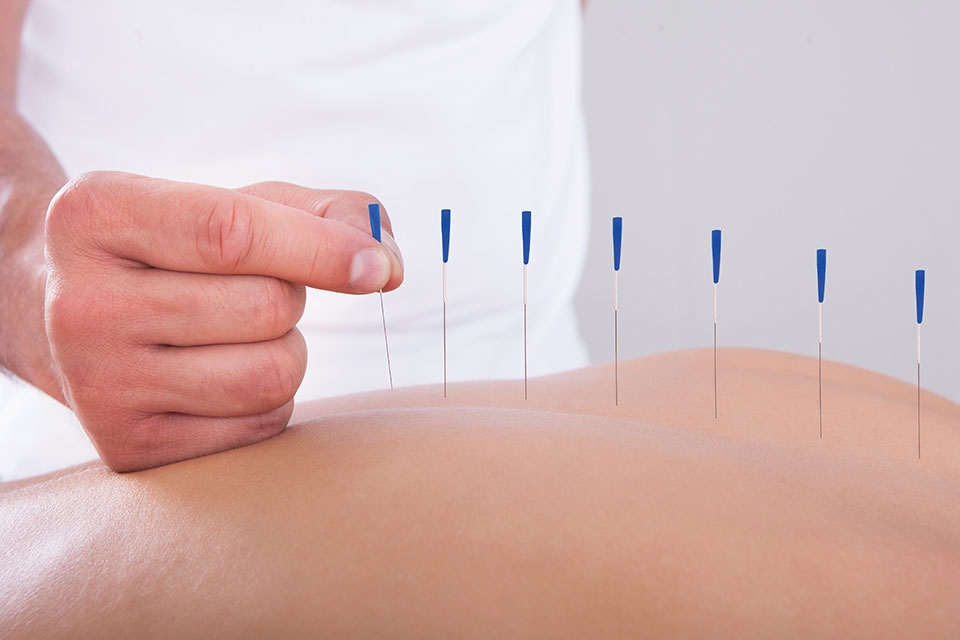Recovery Redefined: New and Effective Methods for Injury Rehab

Pain from injury can prevent you from achieving your goals–but it doesn’t have to.
Almost every athlete gets injured during the course of training or competing in his or her sport. When injuries occur, the best first aid is to follow the RICE method: Rest, Icing, Compression, and Elevation of the injury. However, what can athletes do to heal injuries beyond first aid methods, and what are best ways to address injuries once they become chronic or recurrent? Jessica Manson, MAcOM, Dipl.OM, LAc explains what to do to encourage quick healing and how to prevent sports injuries from happening.
What happens to the body when a sports injury occurs?
Most sports injuries occur when a muscle, tendon, ligament, or bone undergoes too much stress and tears/breaks partially or fully. The body’s first step to heal the injury is to create inflammation, presenting as pain, redness, swelling, and/or heat in the affected area. Inflammation is the body’s signal to send healing mediators to the injured area. If inflammation is left unchecked, however, it can cause an excess of pain and swelling and prevent efficient healing. The RICE method helps control inflammation when injuries first occur, but it often loses effectiveness after the first few days post injury.
What can I do to repair my tissue as quickly as possible?
The number one principle to heal an injury is to rest the area and to immediately stop doing any activities that increase pain. While resting the tissue, healing can be accelerated with a combination of procedures and nutritional support. Efficient healing methods simultaneously allow enough inflammation to promote a healing response while preventing inflammation from escalating out of control. Laser therapy at 980nm speeds cell metabolism, allowing cells to divide quickly and thus heal tissue rapidly. Every time the laser is applied, cells divide more and more quickly, thus healing tissue more efficiently with each treatment. Laser therapy accelerates healing of all tissue types: from skin wounds to tendonitis to bone fractures. Laser is most effective when combined with nutritional support, like collagen, which gives the tissue nutritional building blocks to use in the repair process. Boswellia resin (aka: frankincense, ru xiang) and turmeric are also effective herbs that can keep inflammation in check without stopping the healing process.
What can I do to manage pain during the healing process?
While laser therapy and nutritional support can alleviate pain during the healing process, ear acupuncture can help reduce nagging, constant pains. Ear acupuncture works by changing the way the brain processes pain signals, thus lowering perceived pain levels. This reduction of pain signals can promote faster healing in addition to making the athlete more comfortable.
How can I strengthen my body to prevent injuries from occurring?
Consistent, low intensity exercise is the best way to prevent injury. A daily program of low intensity exercises strengthens the entire body without depleting any muscle, tendon, or hormone reserves. Adding a daily low intensity regimen to higher intensity athletics can improve performance in high intensity activities as well as prevent injuries. My favorite core program is the 30×4 “no pain, all gain” exercise program, which takes about 35 minutes per day and can be found online at austiniom.com/patient-resources.
Regular (weekly or biweekly) cupping therapy also helps encourage blood flow to muscles and releases fascia, which can help enhance performance and prevent injuries. Consistent nutritional supplementation with collagen, minerals, and inflammation-controlling herbs is also crucial for injury prevention and performance enhancement.
Jessica Manson, MAcOM, Dipl.OM, LAc
Owner, Integrative Oriental Medicine
7700 TX-71 Suite 170 | Austin, TX 78735
(512) 599-9313 | austiniom.com






